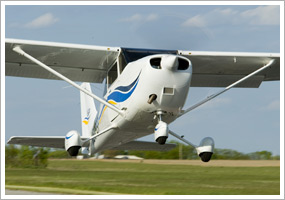Custom content for the Nov. 25, 2011, issue of 'AOPA ePilot' newsletter
| The following stories from the Nov. 25, 2011, edition of AOPA ePilot were provided to AOPA members who expressed an interest in the particular subject areas. Any AOPA member can receive information tailored to their areas of interest by updating their preferences online |
training tipsAppreciating angle of attack You will sharpen your awareness, catch any misconception—and perhaps avoid a future mishap, as pervasive misconceptions of angle of attack often translate into piloting errors. You also will be doing your flight instructor a service. That’s because instructors must review this important subject when they attend refresher clinics to renew their instructor certification. Creating your own graphic to illustrate your aircraft’s angle of attack in flight scenarios ensures that you have proceeded beyond a rote definition, and can avoid allowing the angle of attack to become excessive in flight. You know that angle of attack is the angle between the relative wind and a theoretical line from the leading edge to the trailing edge of the wing, the chord. Exceeding the wing’s critical angle of attack disrupts airflow and causes an aerodynamic stall; recovery is made by lowering the angle of attack, which allows the air to flow smoothly again and lets the wing once again produce lift. A hint about visualizing or drawing relative wind on your diagram: Remember that relative wind flows parallel and opposite to your aircraft’s flight path. For example, on a landing, as you flare for touchdown, that flight path is downward but the pitch attitude of the aircraft may be so high as to obscure your view forward. Unlike a climbing or descending aircraft, only an aircraft in level flight has a relative wind parallel to the horizon. In that case the angle of attack depends on the airspeed being flown, that is, the pitch attitude required to maintain level flight. Are there instruments that measure angle of attack? Yes, but they generally are not found in general aviation aircraft. To see some, and to hear an expert panel field questions about angle of attack, see this Air Safety Institute Safety Spotlight on aerodynamics as a component of your subject review. training productsCessna Flight Gear bag from Sporty’sThe Cessna Flight Gear bag can convert from a portfolio bag to a backpack. If you need to carry a few things, use it in portfolio mode, but if your trip requires you carry a weekend’s worth of gear, it becomes a backpack. The bag includes an iPad/tablet pocket, external pockets, padded shoulder straps, and a padded GPS pocket. It features the Cessna logo on the front. The bag sells for $99.95 and can be ordered online or by calling 800/776-7897 (800/SPORTYS).
Note: Products listed have not been evaluated by ePilot editors unless otherwise noted. AOPA assumes no responsibility for products or services listed or for claims or actions by manufacturers or vendors. final exam
Question: Does a flight instructor have to be present for a person using a flight training device to log instrument time in satisfying recent instrument experience requirements?
Answer: Yes. According to FAR 61.51(g)(4), "A person can use time in a flight simulator, flight training device, or aviation training device for acquiring instrument aeronautical experience for a pilot certificate, rating, or instrument recency experience, provided an authorized instructor is present to observe that time and signs the person's logbook or training record to verify the time and the content of the training session." For more information on the use of flight training devices, read the subject report, Flight Training Devices and Desktop Simulators.
Got a question for our technical services staff? E-mail [email protected] or call the Pilot Information Center, 800/872-2672. Don’t forget the online archive of “Final Exam” questions and answers, searchable by keyword or topic. |
 The next time you hold a question-and-answer session with your flight instructor take time to double-check your understanding of one of the most basic aerodynamic concepts—angle of attack—and its associated terms. Then sketch or visualize your training airplane in various flight conditions, and see if you are correctly interpreting its angle of attack in each instance.
The next time you hold a question-and-answer session with your flight instructor take time to double-check your understanding of one of the most basic aerodynamic concepts—angle of attack—and its associated terms. Then sketch or visualize your training airplane in various flight conditions, and see if you are correctly interpreting its angle of attack in each instance.